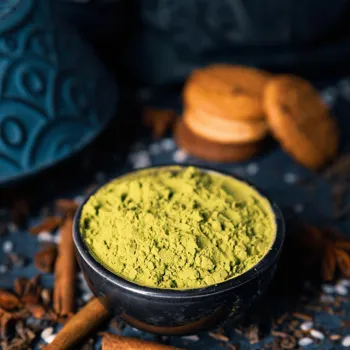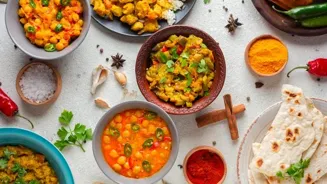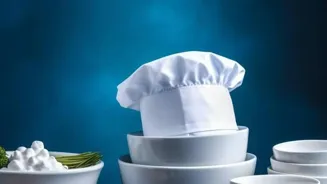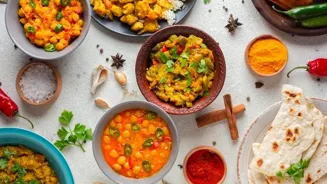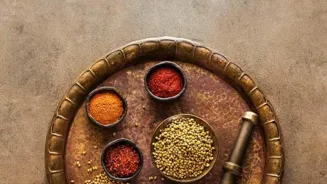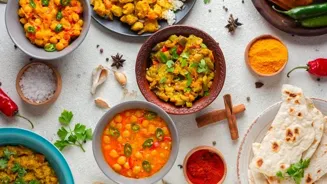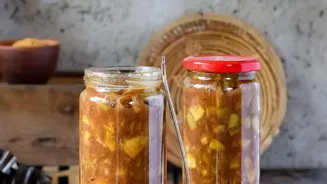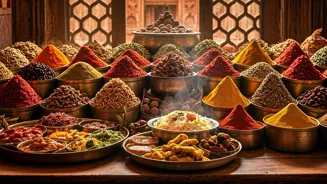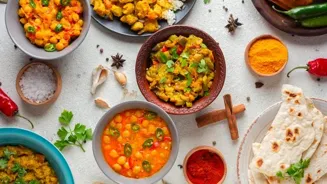Unveiling the Essence of Indian Cuisine through Cooking Techniques. Dive into the aromatic world of Indian cooking!
Namaste, everyone! In India, food is more than just sustenance; it's an emotion, a tradition,
a celebration! And at the very heart of this flavourful journey lies the mastery of cooking techniques.
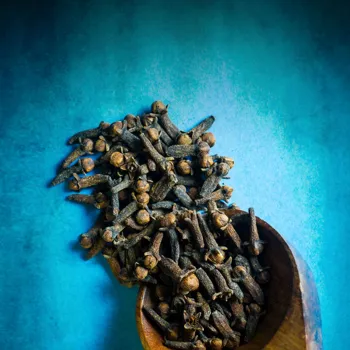
It's not just about throwing ingredients together; it's about understanding how each method brings out the unique essence of every spice and vegetable. Let's dive into the aromatic world of Indian cooking and explore why these techniques are simply indispensable.
Master the art of tempering and sautéing for flavorful dishes
One of the foundational techniques is tempering, known as 'tadka' or 'chaunk' in many homes. This involves heating oil or ghee and then adding whole spices like mustard seeds, cumin seeds, and dried chilies.
As they splutter and release their fragrance, the oil is poured over a dish, infusing it with a burst of flavour. Think of the humble dal – a simple tadka can elevate it from ordinary to extraordinary!
Another essential technique is sautéing, or 'bhunao,' where ingredients are cooked over medium heat with constant stirring. This is crucial for developing the deep, complex flavours in dishes like vegetable curries.
For example, bhunaing onions, ginger, and garlic until they are golden brown releases their sweetness and aroma, forming the base for a delicious dish. Don't underestimate the power of simple stir-frying too!
Indian cooking: roasting & grilling enhance flavors & textures
Roasting is another key cooking method in Indian cooking. We Indian's roast nuts, seeds, spices, and even flours to deepen their flavour. For instance, roasted cumin powder has a much more pronounced flavour than raw cumin powder.
Roasting also helps to bring out the nutty notes in ingredients, adding complexity to the final dish. Grilling, or 'tandoori,' is a technique that has earned global fame. While traditionally done in a tandoor oven, it can also be replicated on a grill or even under a broiler.
The high heat and charring create a smoky flavour that is unmistakable in dishes like paneer tikka or tandoori vegetables. Consider the texture – grilling gives a beautiful outer layer while locking in the juices.
Steaming and simmering enhance flavor and nutrients
Steaming, or 'bhapna,' is a gentle cooking method that preserves the nutrients and natural flavours of vegetables. It's a popular technique for making idlis, dhoklas, and steamed momos. The steam cooks the food evenly without adding any extra oil, making it a healthy and delicious option.
Simmering is another important technique that is used in many Indian home cooks. Simmering allows the flavors to meld together slowly, resulting in a richer and more flavorful dish. It's often used for making stews, sauces, and slow-cooked curries.
Think of a simple tomato based curry; simmering allows the tomatoes to break down and create a smooth, luscious gravy.
Deep-frying vs. pressure cooking for quick, tasty meals
Now, let's talk about deep-frying, or 'talna.' While it might not be the healthiest option, there's no denying the allure of crispy, golden-brown snacks. From samosas and pakoras to crispy bhindi, deep-frying is a technique that's hard to resist.
The key to successful deep-frying is maintaining the correct oil temperature and avoiding overcrowding the pan. Too low a temperature and the food will absorb too much oil; too high and it will burn on the outside before cooking through. Pressure cooking is one technique that is very common.
It is used to cook beans, lentils etc fast. This method seals in moisture and flavor, resulting in quickly cooked delicious meals.
Frying with minimal oil for crispy texture
Frying is done with a very small amount of oil compared to the deep fry. This method is used to cook food that need to be brown and crips. This is often used to make vegetables and small food pieces.
Microwaving is a quick way to cook and warm food
Microwaving is another method of cooking. This provides a simple way of warming foods when one has less time to cook food.
Various cookware types in Indian kitchens aid cooking processes
There are many varieties of cookware that are often used in Indian households. Stainless steel, copper, and cast iron are often used. Depending on the dish, and the type of food, each utensil helps aid in the cooking process.
Master cooking techniques for authentic Indian flavors. Experiment, practice, learn!
So, next time you're in the kitchen, remember that mastering these cooking techniques is the key to unlocking the authentic flavours of Indian cuisine. Experiment, practice, and don't be afraid to make mistakes – that's how you learn! Happy cooking!
